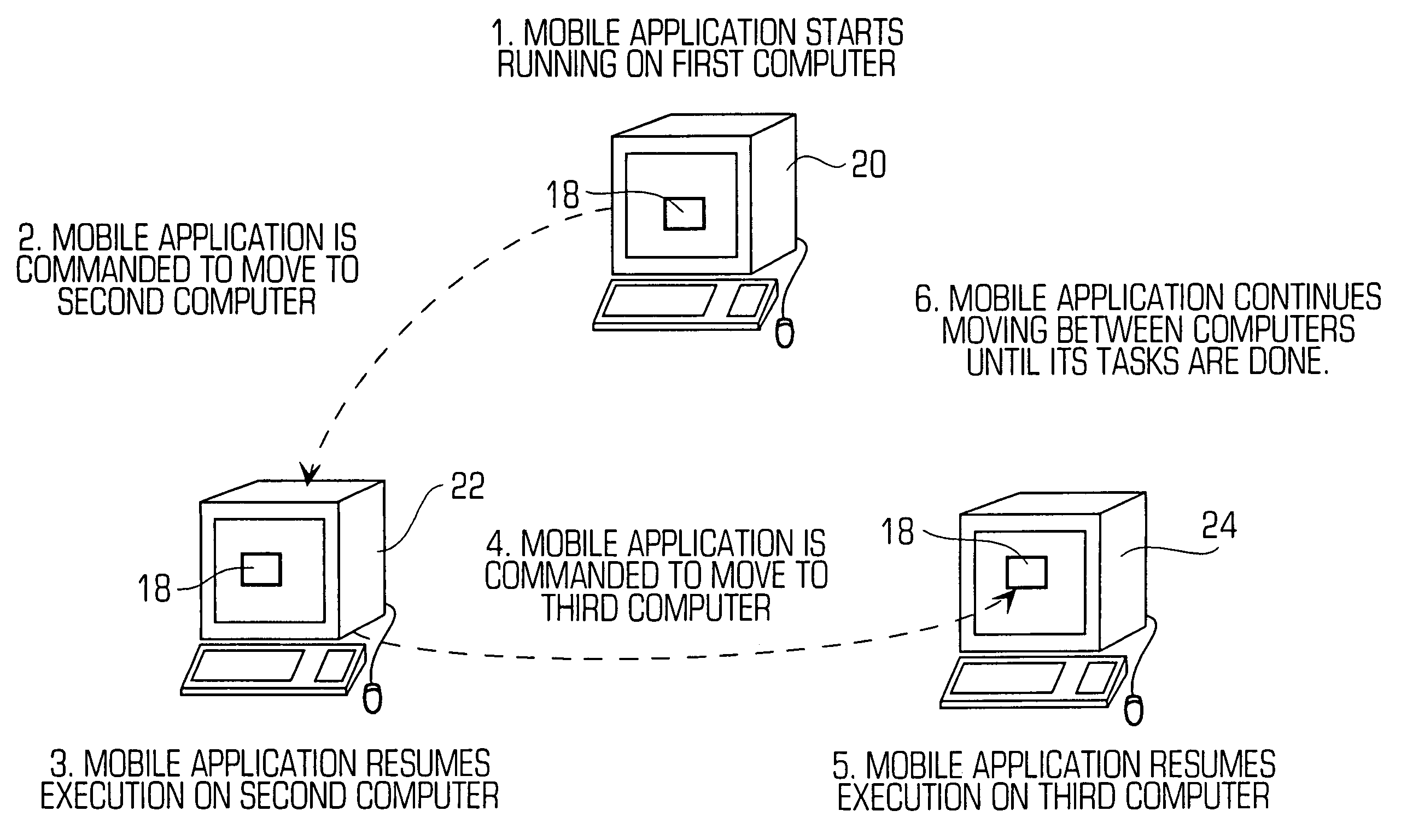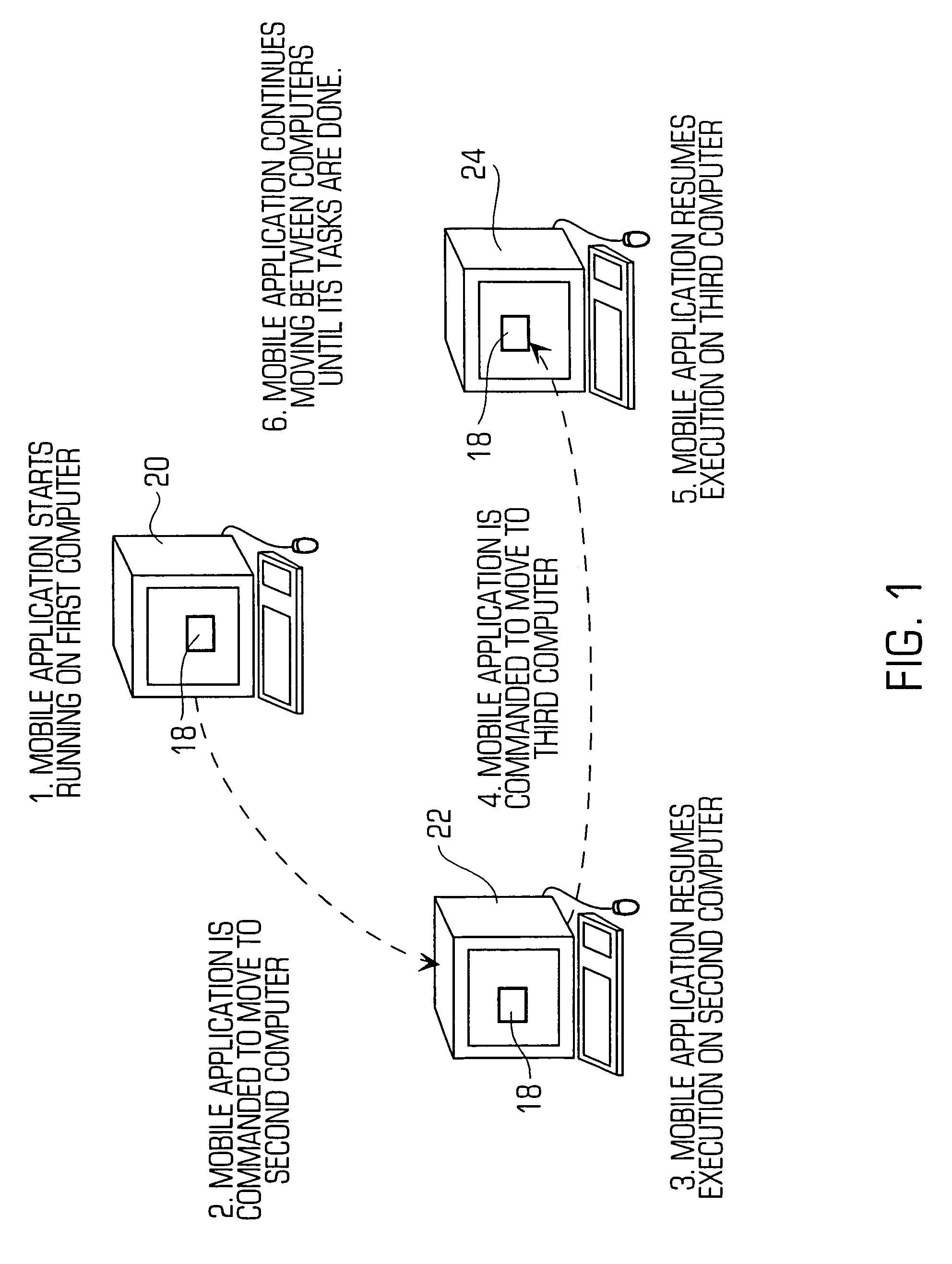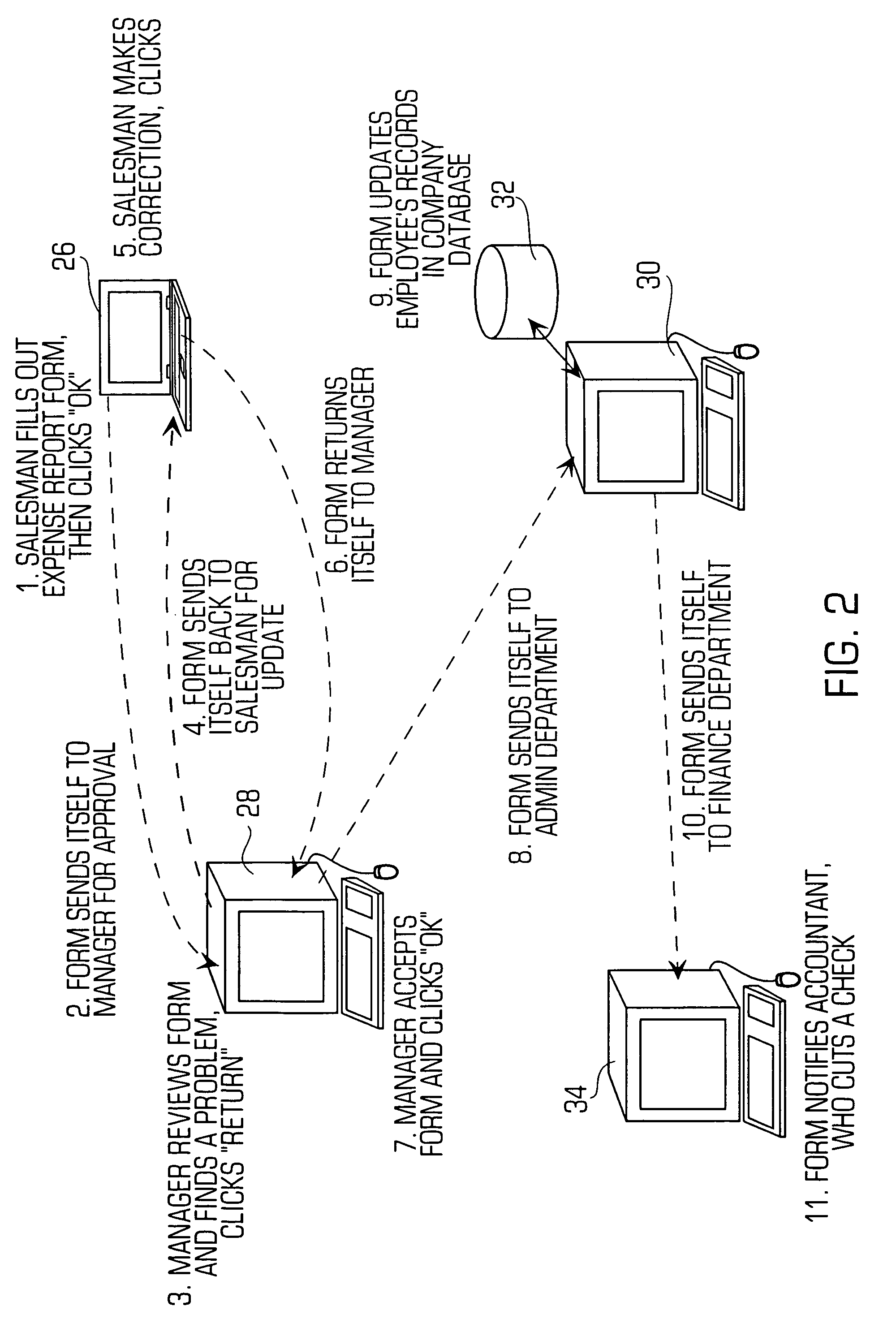Mobile application peer-to-peer security system and method
a security system and mobile application technology, applied in multi-programming arrangements, instruments, data switching networks, etc., can solve problems such as inability to ensure that an hostile host cannot inject unsafe code into the mobile application system, system failure to recognize a single instantiation of a software program, and inability to ensure that the mobile application system cannot be attacked by hostile hosts. to achieve the effect of increasing the overall level of security
- Summary
- Abstract
- Description
- Claims
- Application Information
AI Technical Summary
Benefits of technology
Problems solved by technology
Method used
Image
Examples
first embodiment
[0047]In accordance with the invention, since any mobile application must jump to the server between each host, the server may capture and record the entire mobile application during each jump. Then, on subsequent jumps, the server can compare the previously saved mobile application with the new (and potentially changed) mobile application to detect unwanted tampering by each host. The above is just one example of the security checks that can be performed by the server and the server may also perform other security checks as described below. As another example, if the code or data of a mobile application is marked as immutable, then the server may simply assume that the code or data has been altered (without necessarily checking it) and replace the current code or data with code or data that is known to be safe. In particular, six different embodiments will be described. Now, the security system (referred to as “Jumping Beans”) will be described that prevents / detects unwanted change...
second embodiment
[0060]Next, the server forwards the mobile application to the next host (Host2 in this example). At Host2, the mobile application is received, executed and later dispatched to the next host (Host3 in this example). To transfer the mobile application to Host3, the server receives the mobile application again, stores data representing the mobile application at the current time and compares the data of the newly received mobile application with the original data it saved initially to check for various security problems and then, provided that the code has not changed, forwards the mobile application to Host3. The mobile application then arrives at Host3 which executes the mobile application. In summary, on each jump, the server can save data about the mobile application's code and, on subsequent jumps, the server can compare the previously saved data to the current data of the mobile application in order to ensure that nothing was added to or removed from the code of the mobile applica...
fourth embodiment
[0088]FIG. 13 is a diagram illustrating a first example of the mobile application security system 50 for detecting unwanted changes in the itinerary of the mobile application in accordance with the invention. In general, on each jump of the mobile application, the server may determine the host from which the mobile application was dispatched and the hosts to which the mobile application is dispatched. In particular, this permits the server 52 to enforce the itinerary (e.g., the hosts where the mobile application is going to be executed) of the mobile application. In more detail, a first host (Host1) may create a mobile application 40 and then may dispatch the mobile application to another host through the server 52 in accordance with the invention. When the server receives the mobile application 40, the server 52 may store a copy of the itinerary of the mobile application in the database 62. The server may then forward the mobile application to the next host (Host2) according to the...
PUM
 Login to View More
Login to View More Abstract
Description
Claims
Application Information
 Login to View More
Login to View More - R&D
- Intellectual Property
- Life Sciences
- Materials
- Tech Scout
- Unparalleled Data Quality
- Higher Quality Content
- 60% Fewer Hallucinations
Browse by: Latest US Patents, China's latest patents, Technical Efficacy Thesaurus, Application Domain, Technology Topic, Popular Technical Reports.
© 2025 PatSnap. All rights reserved.Legal|Privacy policy|Modern Slavery Act Transparency Statement|Sitemap|About US| Contact US: help@patsnap.com



